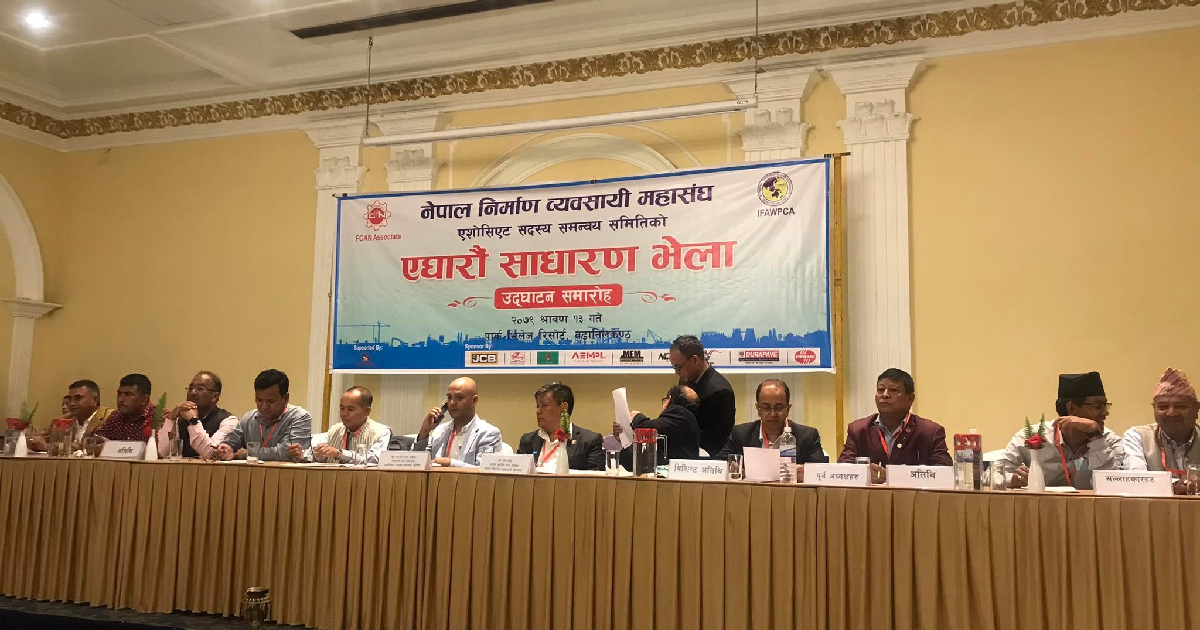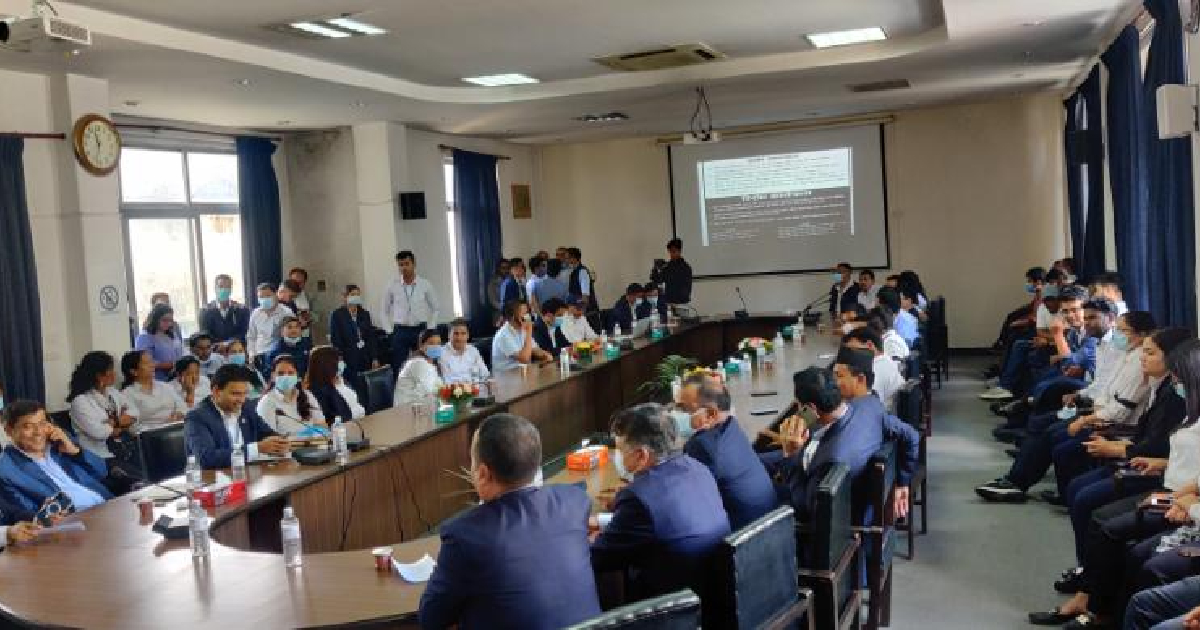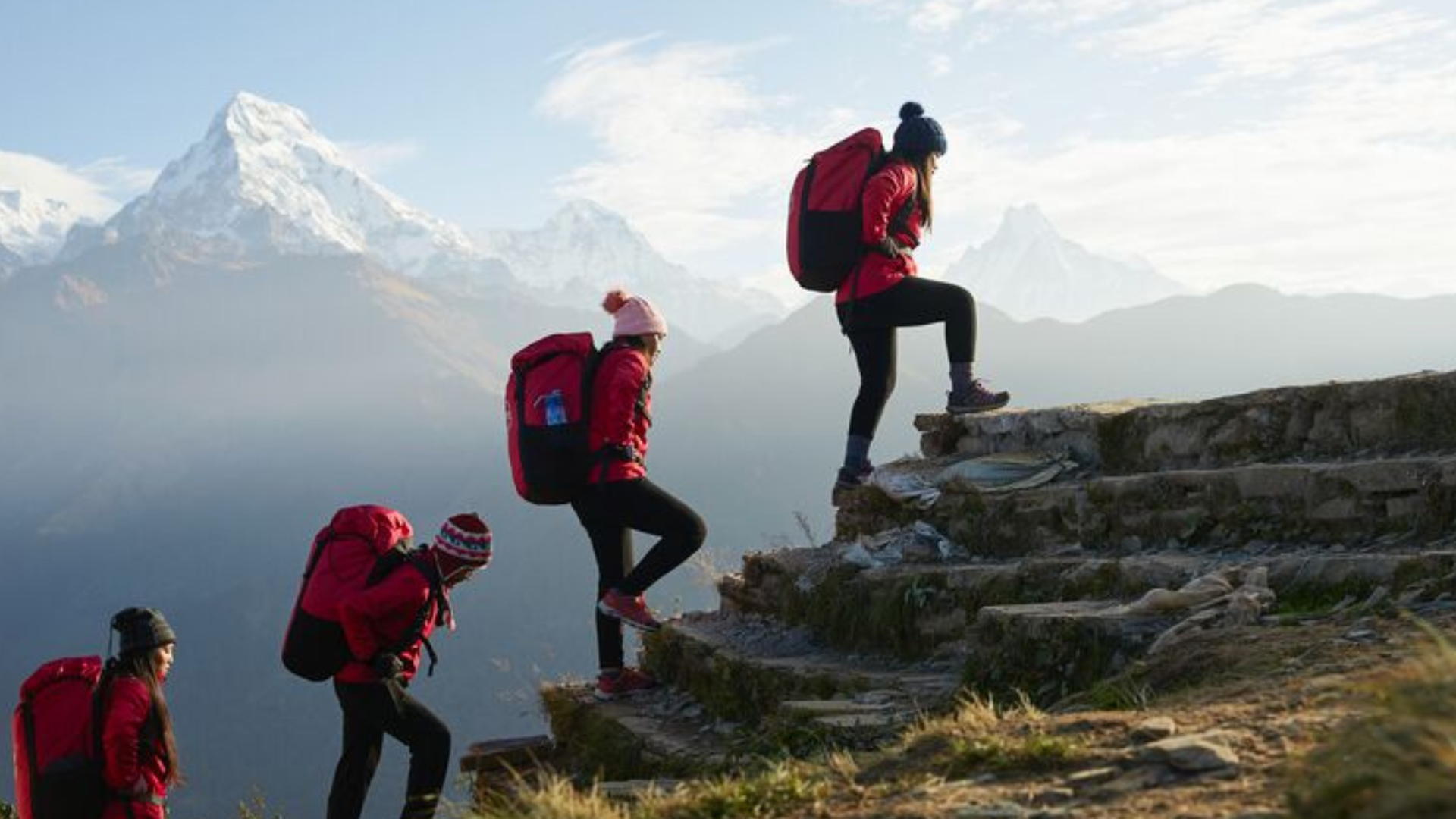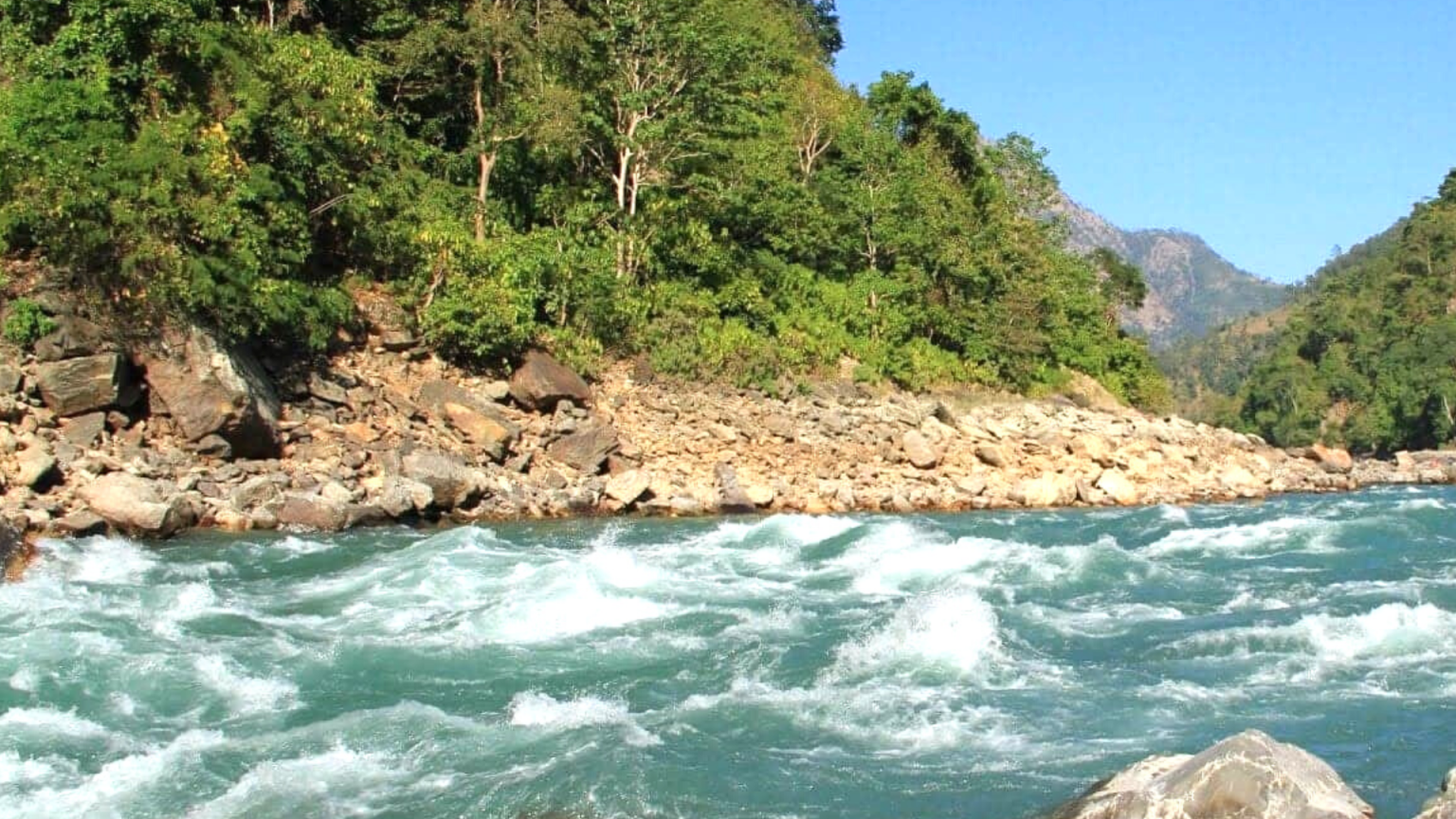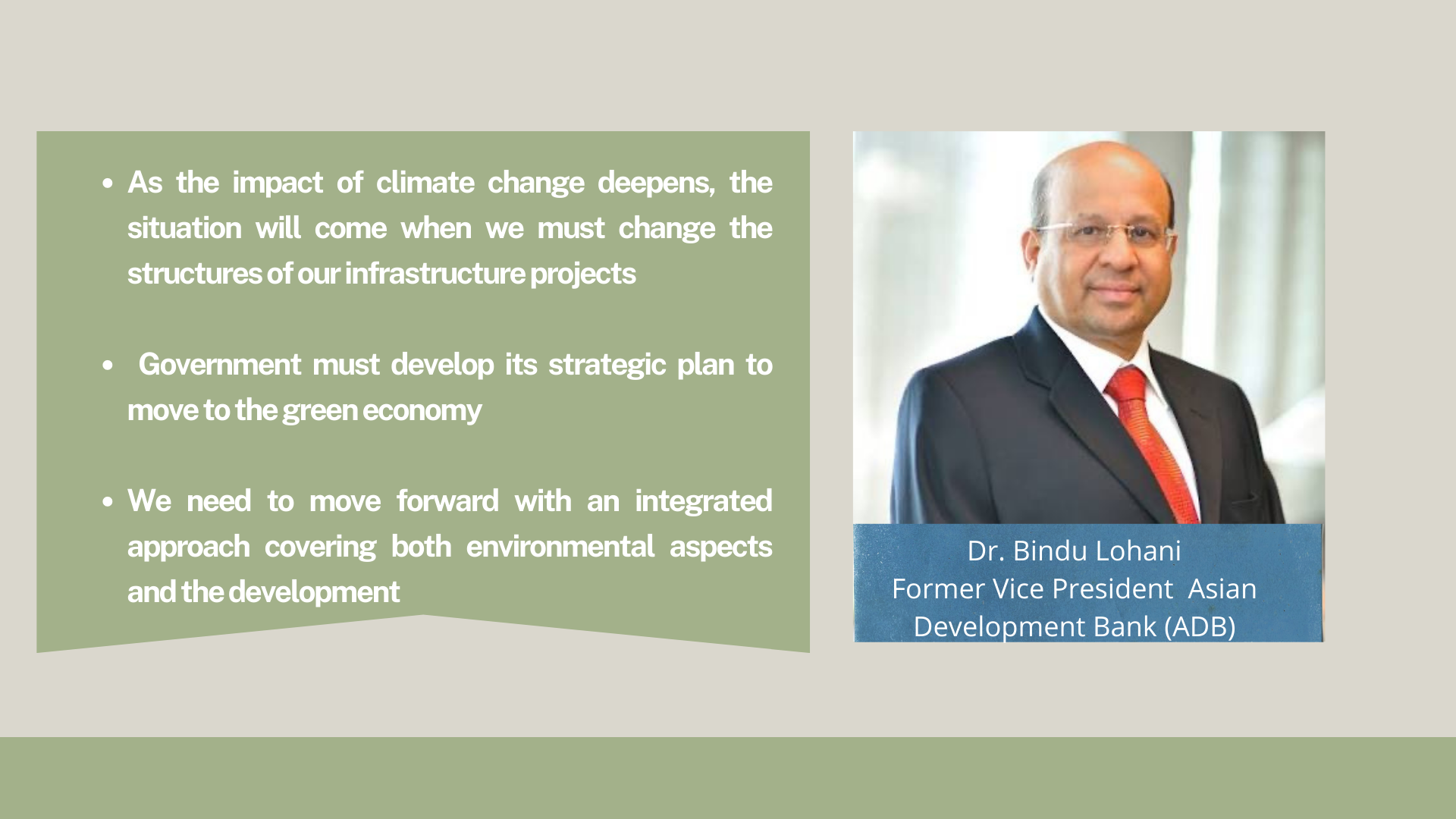



There have been more debates and discussions about the development of green infrastructure around the world. How significant are these deliberations?
The world has observed climate change as the most pressing issue. It has inflicted a negative impact not only on a single region, country, and individual but on the whole world. No area has remained untouched by this climate phenomenon. Nepal is among the countries which are at the frontline of climate change impact. The snow peaks in our mighty Himalayas are also melting. This has directly affected snow-fed river flows making the downstream population more vulnerable to its impact. Due to changes in climate patterns and temperature changes, problems have started to appear in the agriculture sector.
Due to the worsening effect of climate change, there will be a situation when hydropower projects face water shortage. Scholars from different countries of the world have been conducting various research on this crucial topic focusing on Nepal as well. Those studies estimated that climate change will have an impact of 1.5 to 2 percent of the gross domestic product (GDP) of Nepal. Those studies were focused on the agricultural, hydropower, and water resources sectors of Nepal. Even in 2017, it has been found that the GDP has been affected by up to 3 percent. If we conduct a fresh study, the amount of such an effect will be seen even higher.
If we are to project the impact after one hundred years, it is certain that there will be a host of problems including economic and human displacement. Since climate change has emerged as a global pain point, it has highlighted the necessity of collective efforts globally.
Although the Paris Agreement was signed in 2015, its implementation in many countries has been found weak. An international conference ‘COP-26’ was held in Glasgow, the UK about nine months ago, and also emphasized the need to sincerely deal with the growing problem of climate change and effectively implement the Paris Agreement.
Nepal has also committed to zero carbon emission by the year 2045 at COP 26 in Glasgow. How easy to fulfill the pledge by Nepal?
It is challenging to meet our commitment. If we talk about Kathmandu, the air pollution here is very high. Kathmandu has been put on the list of the most polluted cities in Asia. It has been found that GDP has declined by 1 to 2 percent due to excessive traffic jams. Air pollution has also affected the lungs of the residents. If you look at the expenses for lung treatment, it is even more frightening. That is why we have to go to the development of green infrastructure to support the implementation of Nepal’s commitment.
How significant are green infrastructure projects?
Every infrastructure project we build must be climate-friendly and environment-friendly. Many years ago, we worked hard to create the concept of Environmental Impact Assessment (EIA) and get it implemented. It is believed that making the project in this way will not affect the environment. Such documents are instrumental to make our development projects environment friendly and ensure minimum impact on the environment.
Whatever infrastructure we build, we should focus on the impact of climate change. One should be alert and aware so that it does not get affected. Designing or building such infrastructure will definitely incur additional fees and expenses. Although it may seem expensive at the beginning, if you invest in thinking about the future, it will be beneficial in the end.
However, even now, we do not pay enough attention to climate change while building infrastructures. What should be noted is that no matter what kind of infrastructure we build, we should focus on the impact of climate change. One should be alert and aware so that such projects would not affect the climate. Designing or building such infrastructure requires additional cost and effort. Although it may seem expensive at the beginning, it will pay off and be beneficial in the future. During project preparation, if we prepare a national climate policy, climate impact, and risk accounting system, it will help to make the projects environmentally friendly.
By taking our country towards a green economy, it will become a win-win environment for all parties. It may be difficult to suddenly move towards a green economy, but it will be beneficial later on. Now, if climate change and environmental aspects are not taken into account while building any infrastructure, serious problems are sure to arise.
When the impact of climate change is deepening, we may have to change the structure of the infrastructure that we build. We have been operating transport and building roads in the old fashion. Now it should be done in a ‘low-carbon’ way. Our main problem is that we are very weak in technology. We are working on very poor technology. We also have to advance in technology by ‘leaf frogging’, not at snails’ pace. By steering our country towards a green economy, a win-win environment will be created for all parties. It may be difficult to suddenly move towards a green economy. Now, if climate change and environmental aspects are not taken into account while building any infrastructure, serious problems are sure to occur. We should not forget the fact that it is the age of green infrastructure.
How can people benefit from green infrastructure?
If we do not build climate change-friendly infrastructure, the structure of such infrastructure may become unusable due to this. Let’s look at just one example, the melting of Nepal’s glaciers is increasing. However, if we do not build a high bridge because the glacier will increase in the future when we build a bridge on the river, then those bridges may collapse or become useless. If we do not build any infrastructure with a long-term vision, that infrastructure may not work in the middle. Even if we can emit the least amount of carbon, it will be beneficial for us. After producing a small amount of carbon, we can get a lot of financial incentives including financial grants in the form of the Global Climate Fund (GCF) from various donor agencies in the long term. There are billions of dollars in the GCF for green financing. In the beginning, the construction of infrastructure according to climate change may be expensive. However, there is no doubt that it will ultimately benefit.
It is said that Nepal’s economy cannot afford green infrastructure because it is expensive. Is this a situation?
Every year more than USD 100 million has been collected for the Global Climate Fund. We can get extra money from that too. We are not able to capitalize on those additional funds. There are many opportunities where we can attract such international funds to the country even by introducing programs like low carbon pricing. We have to quit the misconception that we can’t do it and move on to the fact that we can deliver. It is high time that we promote green infrastructure.
If we try to build green infrastructure, we can mobilize green resources. Most countries in the world have issued green bonds for the promotion of green infrastructure. For that, funding also comes from foreign countries.
Since we are not able to make action plans that include resources at various international levels, we are not able to attract them. Many countries in the world are advancing towards green infrastructure by attracting such funds. Investment in the infrastructure sector in Nepal is very low, only 2.6 percent of GDP. In Nepal, we have only the practice of talking big about development and infrastructure but acting less. If we try to build green infrastructure, we can mobilize green resources at home and from abroad.
Where is the gap in our country to go toward green infrastructure?
Our government should have a strategic plan to move towards a green economy. It is very limited so far. Green infrastructure should also be a priority of the government. We have to advance the concept that we will also implement this. The project to be built in the future should be carried forward with the concept of green infrastructure. For example, it is not impossible to electrify public buses in Kathmandu Valley.
Most of the countries in the world have done it. First of all, what we need. It has been used around the world. It will be done by looking at it. In the Chinese city of Shenzhen, more than 16,000 public buses and 17,000 taxis are running on electricity. If our government has a similar commitment, it does not mean that it cannot be followed here as well. The current problem is that we do not have such commitment and vision.
Where do you see problems in going to green infrastructure?
There is a huge gap in policies and their implementation in our country. In other countries, regular studies are carried out on potential in water supply, electricity, agriculture, transportation, and others. They also conduct separate studies to see how much carbon emissions can be reduced in distinctive areas. However, the problem has arisen due to the lack of development of such a practice in our country. This problem has arisen due to our failure to effectively implement the policies and commitments made.
There is a huge gap in policies and their implementation in our country. In other countries, regular studies are carried out on potential in water supply, electricity, agriculture, transportation, and others. They also conduct separate studies to see how much carbon emissions can be reduced in distinctive areas. However, the problem has arisen due to the lack of development of such a practice in our country.
The government has been announcing various programs regarding climate-friendly development projects in the budget speech for a long time. Are Nepal’s infrastructures becoming climate-friendly?
Although it is said to build climate change-friendly infrastructure in the budget, it is not seen in practice. The government of Nepal does not seem to be able to move ahead in the development of green infrastructure in a serious way. Despite this, the government’s announcement for Green, Flexible, Inclusive Development (GRID) is a good effort. In the programs and plans launched by the Nepal government, green infrastructure issues have been included only in a general way. However, it has not been seen in detail yet. Going for green infrastructure will bring many benefits to the country. Now Nepal has no option to go for green infrastructure. Although there is a possibility of receiving a lot of support and subsidies from donor agencies in a green economy and infrastructure, we are not able to create such an environment.
The conflict between development and the environment is seen in Nepal from time to time. There is also a debate about whether the environment comes first or infrastructure. How do you see the balance between the two?
This is a very old debate that was heated in the 1970s. The development of the concept that environment and development should go hand in hand happened at that time. We are now embracing environment and infrastructure as an integrated topic. In the current context, environment and development should not be separated but integrated. When developing infrastructure, five things, in particular, need to be taken into consideration.
In our country, infrastructure is only about cement and rods. Infrastructure is not only a physical structure. The aspect of how the infrastructure has given the rate of return to the economy should be discussed very seriously. Such projects also benefit consumers. If roads are built well, people should pay attention to how they will be beneficial. However, it seems that the country will benefit a lot if the roads are built by considering the rate of economic return.
Currently, the development ministries are complaining that the Ministry of Forest and Environment has stopped the development activities.
I have a little knowledge and experience about this. I have also written a book related to EIA. In my opinion, there is no problem with EIA. However, in Nepal, there are a lot of activities carried out by different groups to prevent projects from moving forward. They raise problems in the EIA. EIA is the work of looking at the social, economic, and other aspects of any project in an in-depth manner. In our country, there is a problem even if the work of making EIA is taken very lightly.
I have a little knowledge and experience about this. I have also written a book related to EIA. In my opinion, there is no problem with EIA. However, in Nepal, there are a lot of activities carried out by different groups to prevent projects from moving forward.
There is a forest of sal trees around Kathmandu. Sal tree is also found in most parts of Nepal. We have to study whether the sal tree is an endangered or rare plant or not. Our policies and rules are more problematic than facilitating. Development and construction work is done in countries like USA, India, Thailand, and others. We have not seen such problems as we are experiencing in our country regarding EIA. So now there is no option to solve the problem in EIA once and for all in an amicable way. The development and climate change agendas in Nepal should be accompanied by a focus on mitigation and adaptation. Green investment should also be promoted in line with it.






